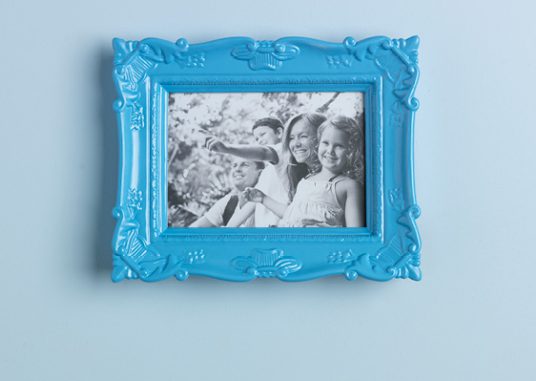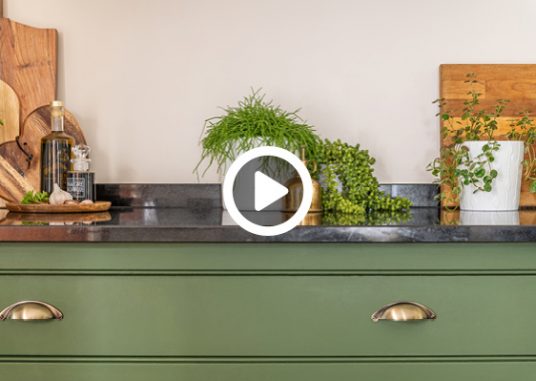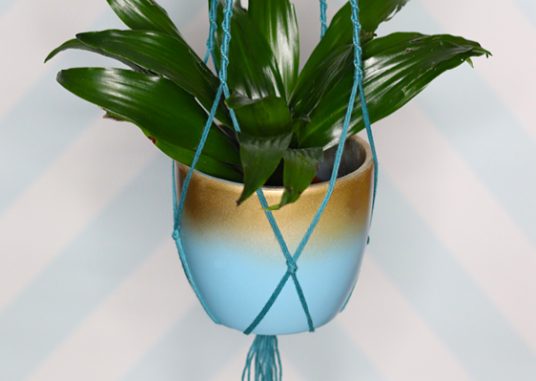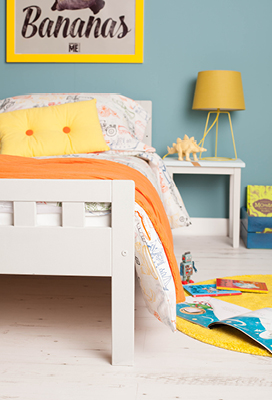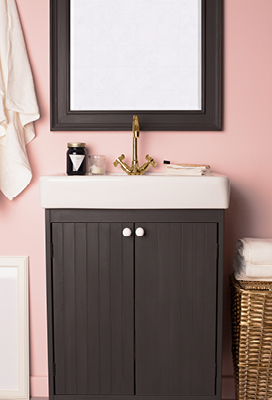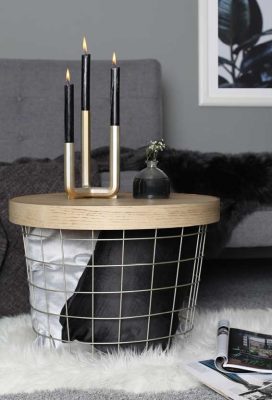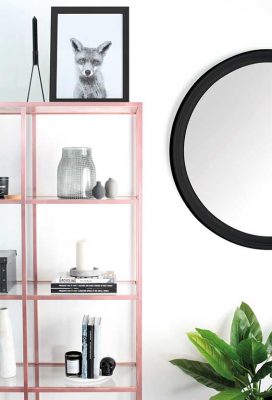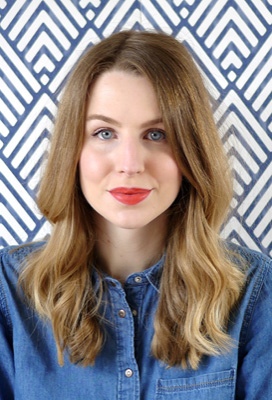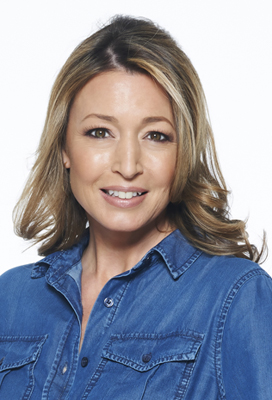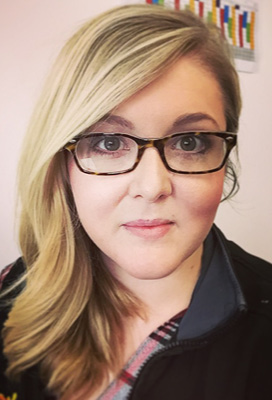BEHIND THE BRUSH: MEET DEBBIE CARNE OF ALIJOE DESIGNS
FROM THE EDITORS OF SOME OF THE MOST READ HOMES AND INTERIORS MAGAZINES TO THE OWNERS OF CRAFTY AND CREATIVE START-UP BUSINESSES, WE SIT DOWN WITH THOSE IN THE KNOW TO GET THE SCOOP ON EVERYTHING FROM WHAT A NORMAL DAY IS LIKE TO THEIR FUTURE TREND PREDICTIONS.
In this week’s Behind The Brush interview, we’re getting to know the founder of Alijoe Designs, Debbie Carne. Grab a cuppa and read on…
1. WHAT MADE YOU WANT TO START YOUR OWN CREATIVE BUSINESS?
DC: I have always had a creative streak that for many years was expressed through my interior choices, personal style and cultural interests. My career for 35 years was in qualitative market research, frequently working with ad agencies but on the more rational, strategic side. I knew I wanted to do something very different and creatively oriented but I really just happened upon upcycling plates — I never dreamed that my ‘hobby’ would become a successful, creative business!

2. How did you come up with your business name?
DC: The name combines the nickname of my elder son (Ali (Alex) and the second name of my younger son (Oliver Joe). One Christmas many years ago on a family walk, the boys were thinking about starting a Sunday morning bakery delivery service — heating baguettes and croissant in our oven and taking the ‘fresh’ products to neighbours. They excitedly came up with the name ‘Alijoes’ but needless to say, Sunday morning lie-ins and social lives took precedence and the neighbours never received their Sunday morning deliveries… But the name lived on and when I realised that my hobby was turning into a business I took ownership of this rather special name.
3. WHAT HAS BEEN THE HIGHLIGHT OF HAVING YOUR OWN BUSINESS SO FAR?
DC: The randomness of wonderful things happening — such as being commissioned by Ted Baker to make plates for a new hotel that they were styling in Bournemouth following a chance encounter with Ted’s ‘Historian’ at a local market where I was trading. And this all happened three months after I set up.
4. What is your creative proccess from start to finish?
DC: Often I have an idea for a plate or plate set and rummage through my stock to find the ‘right’ plates for it.
But sourcing the plates typically kicks off the creative process — finding a plate(s) that inspires an idea and then I can’t wait to get back and work with it.
I will then source the imagery that I am thinking about— either from my ever growing bank or through searching for new options that I can legally use.
Much of the time there will be some Photoshop work on the image and/or revamping of the image to make it mine.
I then create decals with the imagery and use these to apply the imagery to the plates.
Drying time takes up to 24 hours, at which point I check for any defects, air bubbles etc prior heat sealing the plates in the oven.
I generally make a few at a time and once they are ready, I will have a photographing session that can easily take the best part of a day.
All that said, whilst there IS a process, I often find that my best ideas emerge when I am going down a planned route with particular imagery and then that light bulb moment happens and I change tack.

5.WHERE DO YOU SOURCE YOUR CHINA AND IMAGES?
DC: I source the china from all over England and absolutely love this part of the process (luckily, so does my husband so we sometimes turn it into an overnight trip to maximise the opportunity of sourcing out of London)
Charity shops, junk shops, car boot sales, flea markets, house clearance stores, antique shops are all potential sources for wonderful stock – the dustier and more isolated each piece, the better! And now that I am working with chipped or cracked plates, I can invariably be found rummaging around in the discarded boxes for gems that I can work with.
The buzz of going into a shop or market, anticipating a ‘find’ is seriously huge!
The imagery is sourced on the net, again from a variety of places. It has taken some time to gradually build up a bank of imagery that is copyright free and relevant to my needs but I invariably work with images to customise them.
6.WHAT IS YOUR FAVOURITE PIECE OF WORK TO DATE?
DC: Two recent, but very different pieces come to mind:

A beautiful art deco pair of plates that I found in a junk shop in Guildford and upcycled with a wonderful image of a twenties lady in a fabulous green coat — it is/was very special and needless to say, flew off the shelf as soon as I listed it.

The other piece uses damaged plates and was made during one of those inspired moments. It uses two mismatched plates with complementary colours, both of which had chips. I worked the chips into teeth marks with sand paper and tile cutters, applied teeth around them and added the line ‘I’ll have my plate and eat it’. An Instagram post confirmed how popular it is although it hasn’t sold — yet!
7. HOW LONG HAVE YOU BEEN A FAN OF UPCYCLING?
DC: I have always loved vintage items and for many years, admired the talent of artists working with abandoned pieces to create something even more wonderful. Charis Williams was an early inspiration, as was the sighting of a supermarket trolley converted into a chair at an exhibition at the V & A.

8. WHAT ARE YOUR PlANs for the future of alijoe designs?
DC: I would love to do more of what I do and continue with the apparent success of the upcycling business for as long as I can.
Thanks to the internet, I would like to develop the International reach of the business that seems to grow by the day (buyers in China, Abu Dhabi and Australia were all recipients of my plates this week).
A key objective for next year is to develop the positioning of my plates more as ‘art’. At the risk of sounding pretentious, I sell the plates as decorative and as I gradually help people ‘get’ the beauty of them as alternative art, shifting their perspective from the old fashioned take on ‘decorative plates’, I would like to take that one stage further by applying to exhibit at the likes of The Other Art Fair — to be amongst the wonderful array of alternative, quirky pieces would be fantastic. Watch this space!
Alongside this, although nothing to do with upcycling, in response to interest in some of my imagery for functional ware, I have been working with a pottery in Stoke and launched a beautiful but functional fine bone china range in September. On the back of the success of that, I am now working on the second collection for launch in the New Year.
If you’d like to see more of Debbie’s work, check out her website, Instagram, Facebook and Twitter.

